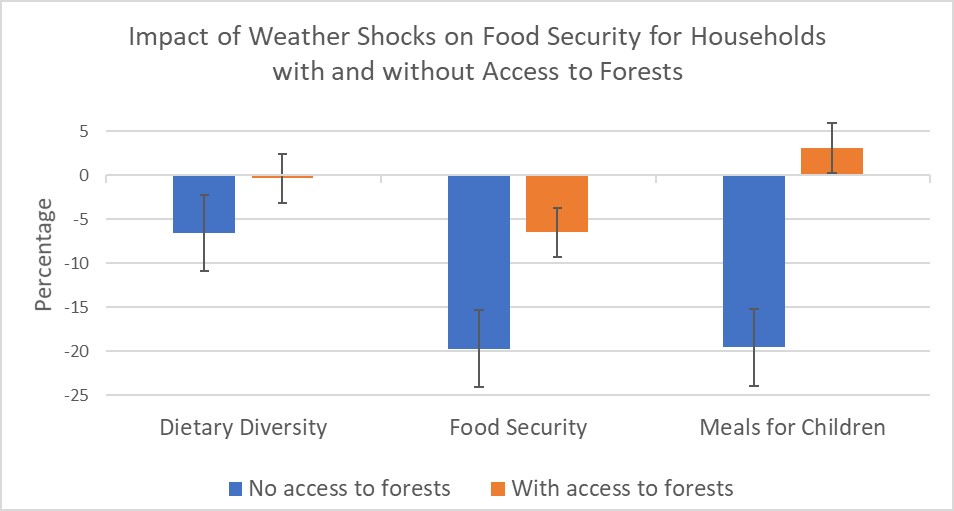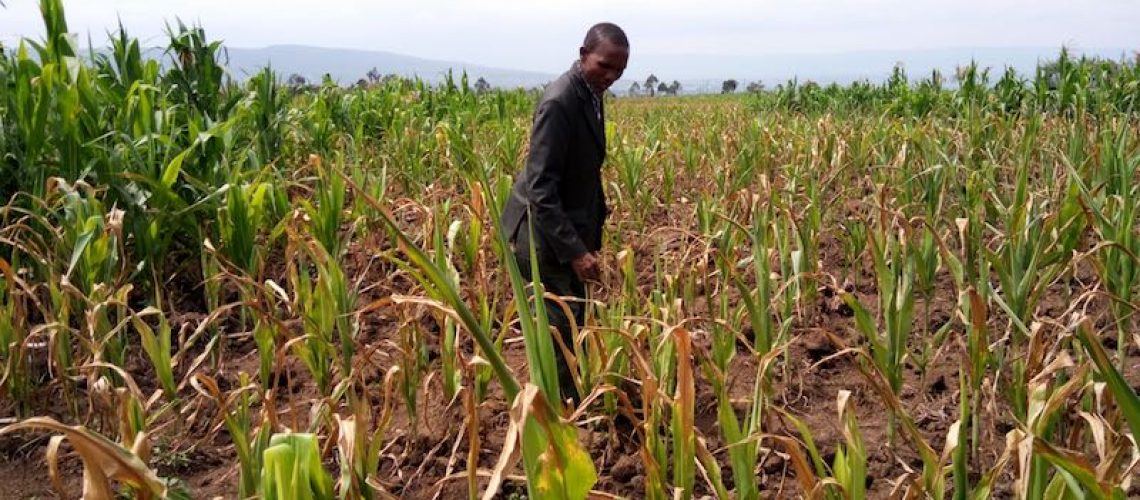Guest Post By Kevin Mulungu, 2019-2020 Sustainability Leadership Fellow and Ph.D. Student in the Department of Agriculture and Resource Economics
Salima District in Malawi (a small country in Sub Saharan Africa, slightly smaller than Pennsylvania) has been an agricultural hub, supplying major crops such as maize, groundnuts, and rice to the country’s food needs. However, in the past six years, farmers have been less optimistic as their land has been ‘cursed’. What used to be celebrations of bumper harvests have turned into community meetings that organize households in preparation for hunger relief efforts. The country has been devastated by both droughts and floods and agriculture which is their main source of livelihood has been battered and they have to find new ways to earn a living.
Salima is not the only area affected by bad weather, especially in Africa. Weather shocks are en vogue nowadays—from increased frequency of floods to droughts that decimate the agricultural production in developing countries where a colossal proportion of farmers depend on rain-fed agriculture; the impact on human welfare is catastrophic. For a country like Malawi, coping with such widespread adverse shocks is a daunting task. This is something I personally experienced while living with my mother in the severe droughts of 1999 in Southern province of Zambia. Without proper mechanisms for coping, such disturbances could devastate the poor, forcing them to sell their assets to cope and consequentially reduce their ability to generate income in the future.
However, there is hope for those with access to forests because forests provide an array of food products such as insects, fruits, small animals, green leafy vegetables, and tubers that are more resilient to weather shocks. These products, collectively called Non-Timber Forest Products (NTFPs), become important for food and nutrition when agriculture fails. Globally, about 1 in 6 people depend on forests for food and income.


But how exactly do forests protect food security and nutrition? To understand this, we did a case study on Malawi, which has about 82% of the rural population using forests for income or food, and high food and nutrition insecurity. With information on households’ food consumption, rainfall patterns, and agriculture for three years (2010, 2013, and 2016), we compared the food security situation of communities with and without access to forests in the event of either a drought or a flood. We operationalized food security as
- the household dietary diversity (number of different food groups consumed),
- whether the households did have enough food throughout the year or not
- whether children under five had at least three meals per day or not.
On all three measures of food security, the impact of weather shocks for those with access to forests is small compared to those without (see figure below).

Without access to forests, dietary diversity, food security, and the number of meals for children are significantly reduced while for those with access, they can allocate more family labor to the collection of NTFPs, offsetting the negative impact of weather shocks. While policymakers focus on using agriculture for nutrition and income, there is a role that forests play as natural insurance when agriculture is affected because forests are more resilient to weather shocks.
For now, the families in Salima have been flocking to the forests to collect edible insects, fruits, mushrooms and small animals that they can find as they try to cope with the bad weather. However, because so many are resorting to the forest, the pressure on the forest is high and unsustainable. To get this pressure off needs making agriculture more resilient to climate-related shocks. The government of Malawi, recognizing the role of forests, has recently allocated $1.5 million (about 1.5% of the annual budget) to forest restoration efforts. These efforts, however, need the help of institutions that can be used to properly manage the access and exploitation of forests to avoid depleting this, obviously, important resource.
The major concern is how forests can be integrated into planned climate change adaptation policies while at the same time making agriculture more productive. Secondly, how do we strike a balance between agricultural expansion that leads to deforestation and conserving forests to ensure that the families in Salima have a contingency plan when agriculture fails? These and many questions will need to be answered moving forward to ensure the social welfare of the households is protected from negative weather shocks, especially in countries where social safety nets and the welfare state is weak.






